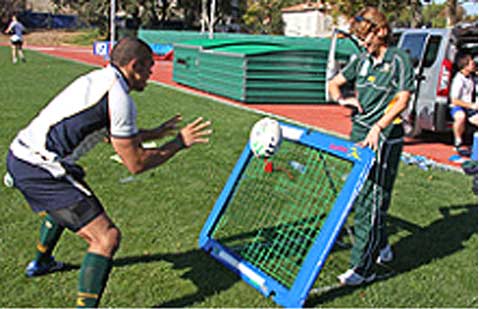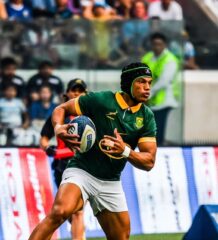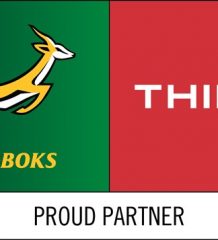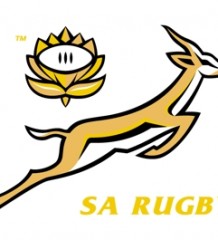Training the eyes that are on the prize
No man has ever done it, no team or coach has ever achieved it.
But if South Africa wins the World Cup in Paris tomorrow morning, a woman will clinch a place in the sport’s record books as the first person to win back-to-back Cup winner’s medals.
Clive Woodward insisted on utilising Sherylle Calder’s skills in 2003 with England and Jake White snapped up the specialist hand/eye co-ordination coach for South Africa’s campaign this time.
South African Calder is typically modest about her role. “I just want the team I work for to do well. There is no doubt that I wanted England to win in 2003, now I want South Africa to succeed.
“I am a professional, that is what it’s about. But I don’t think about myself winning two World Cup medals. I believe South Africa are going to win and it’s very exciting. We have worked pretty hard, put in lots of hours. But I love what I do and of course I’d be proud to receive winner’s medals at successive rugby World Cups. It would mean a lot.”
If you think the number of interceptions Bryan Habana has seized in world rugby to scorch home from anything up to 80m is an aesthetically pleasing coincidence, think again. In fact, Jean de Villiers did the same at Cape Town against New Zealand a couple of years ago when the All Blacks were beaten.
It is part of the Springboks’ minute attention to detail that the skills required for intercepts derive directly from Calder’s programme.
“The value of visual and awareness skills is seen in many ways on the field,” she said.
“Bryan Habana practises his passing and reacting skills against a net in training, throwing the ball against a net which returns it at all kinds of angles, heights and different speeds. Three weeks ago, in a 60-second intense session, he scored 84. This week, he did 118, which is virtually two per second.
With such fast reactions and visual awareness, he will have opportunities for the intercept.
“These interceptions are no coincidence. He has intercepted more passes in the two years I have worked with him than he had done in his whole career.”
Calder won 50 caps for the South African hockey team from 1982-1996. But it is as a visual awareness skills coach that she has helped professional rugby really make serious progress in a field that was largely unknown until recent times.
How has it changed since 2003 with England? “South Africa now are well ahead of where England were in 2003.
“You develop better programmes, both on line and out on the field. It is evolving all the time. Essentially, I am training the eyes to see better and process that information faster so that the mind can respond accordingly. It is about peripheral awareness and responding to it in the most propitious manner possible.
“Since working with England, I have developed a training programme perhaps 80 per cent improved on past times. It is now much more specific, not just to the sport but the individual player.”
In the modern game, split seconds count. So the player who trains to “feel” for where the ball will come to him without actually looking at it will benefit because he can keep his head up, watching where the defence is going as he receives the ball. If he takes his eye off the field to see the ball arriving and then looks up, he has lost a crucial second, potentially a disastrous loss.
And it isn’t just the three-quarters who embrace Calder’s programme. Hooker John Smit and lock forward Johann Muller are high in the squad’s ranking for these skills. “They are all enthusiastic about it; they’re excellent at training,” she reports. “These are highly trained, professional sportsmen so they are naturally competitive. Therefore, I put up leaderboards so they can chart their position and improvements.
“Two weeks ago, centre Jaque Fourie was 25th on the board. This week, he had climbed to eighth. It is that competitive. The programme has been developed so that you compete with yourself because it gives you all that information all the time. But it involves other things too, such as the timing of tackles. Os Du Randt has done a tremendous amount of work on this training programme and you can see now how much better he is timing his tackles. He rates in the top five of the group, which is amazing.”
Where will this part of rugby be in 10 years’ time? It has a huge role to play in academies, says Calder.
* Peter Bills is chief rugby correspondent for Independent News & Media in London.

















